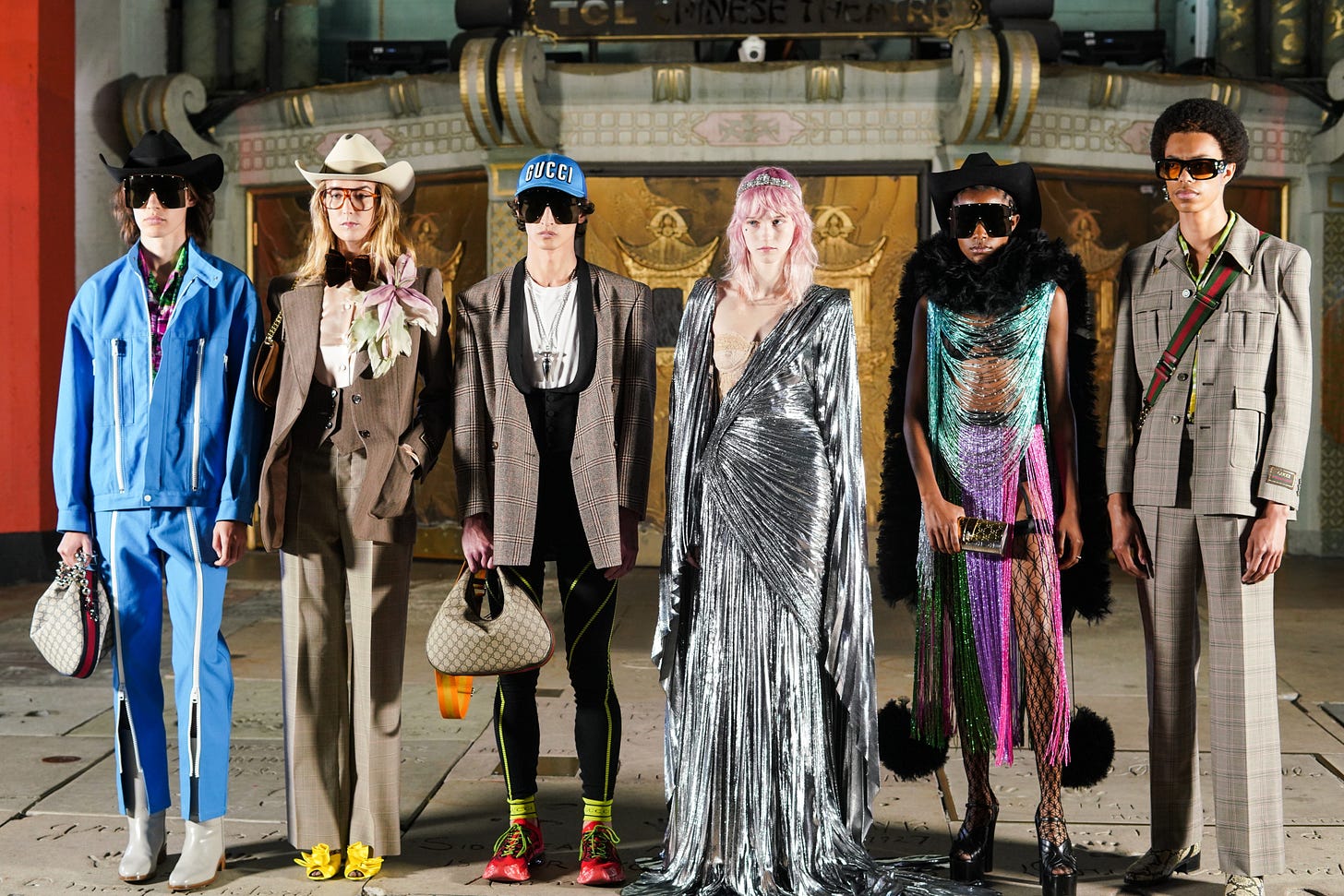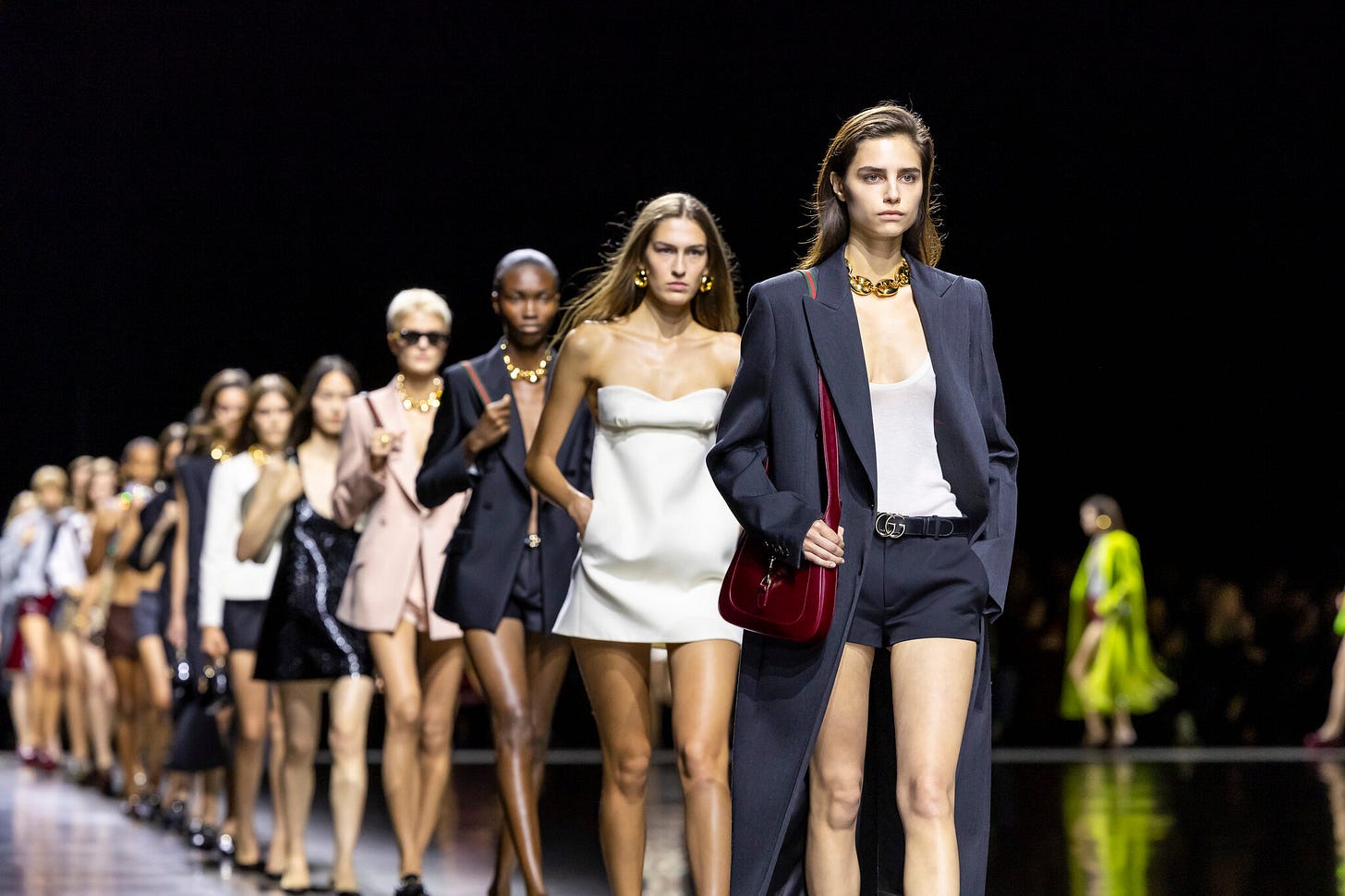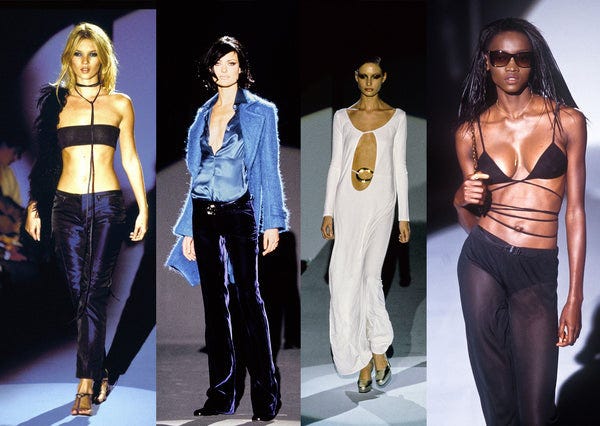Gucci’s Identity Crisis: How a Billion-Dollar Brand Lost Itself in Just Two Years
Let’s take a step back. Think about the brands dominating the conversation right now—Miu Miu, Loewe, Bottega Veneta. Each one has a distinct, almost unmistakable identity that feels completely in sync with their audience. You see a Miu Miu mini and immediately know its wearer. You spot a Bottega intrecciato bag and instantly understand the world it belongs to.
And then, there’s Gucci.
A brand that, for the past two decades, defined cultural moments with an almost hypnotic ability to predict what was next—until it didn’t.
Since the exit of Alessandro Michele, Gucci has felt like a brand in freefall, struggling to find a voice that resonates. The flamboyant maximalism that turned Gucci into a $10 billion empire under Michele has now been replaced with Sabato De Sarno’s muted “quiet luxury” approach—one that neither thrills nor offends, but instead, leaves a once-obsessive audience unsure of what, exactly, Gucci is supposed to mean in 2025.
The problem? Heritage means nothing if you erase what made people care in the first place.
The High-Stakes Gamble of a Brand Reset
When De Sarno’s Gucci debuted in September 2023, industry insiders and customers alike were left… confused. Gone were the theatrical, camp-laced fantasies of Michele’s tenure. In their place: clean lines, precision-cut separates, and the now-viral “Gucci Rosso” red. A total brand reset.
Some called it a necessary course correction. Others, a catastrophic dilution of identity.
“Gucci’s struggles reflect broader issues affecting many luxury brands: an inability to adapt to rapidly evolving consumer preferences,” said Daniel Langer, a luxury brand expert.
And this “starting over” has come at a steep cost.
The Financial Collapse Behind the Aesthetic Shift
Gucci’s revenue declined 25% in Q3 of 2023—one of the most dramatic drops for a leading luxury house in recent years. Parent company Kering issued profit warnings and announced a €3.5 billion stock buyback plan to prevent further collapse.
In comparison, brands like Prada, Hermès, and LVMH saw steady growth in the same period. The contrast? A strong, consistent brand narrative.
“As a brand, Gucci became culturally indispensable during the Michele era,” said Lauren Sherman, a leading fashion analyst. “It was maximalist, expressive, and a rebellion against everything that came before it. The problem now is that it’s unclear what Gucci is rebelling against—or if it even wants to.”
The Power of Narrative: When Gucci Did Get It Right
If there’s one lesson in all of this, it’s that Gucci knows how to win—when it commits to an identity.
• The Tom Ford Era (1994-2004): Erotic, high-gloss, unapologetically sexy. Defined a generation.
• The Alessandro Michele Era (2015-2022): Maximalist, gender-fluid, cultural phenomenon. Created a $10 billion empire.
• The Sabato De Sarno Era (2023-?): Still defining itself.
The issue isn’t whether quiet luxury can work. It clearly does—Bottega Veneta, The Row, Loro Piana. The issue is whether Gucci can make it work within its DNA.
Because let’s be clear: Gucci was never built on subtlety.
What Happens When a Luxury Brand Erases Itself?
There’s a reason Bottega’s quiet luxury works while Gucci’s doesn’t. Bottega’s identity has always been rooted in a certain discretion—it’s what made it aspirational. Gucci, on the other hand, was built on an entirely different emotional currency: boldness, irreverence, and cultural audacity.
Gucci was never about restraint. It was about indulgence. To suddenly strip that away and hope the audience follows? It’s a gamble that rarely pays off.
The result? A brand that feels like it’s speaking to everyone and no one at the same time.
De Sarno’s Gucci has so far failed to spark an emotional connection—the kind of obsession that turns a brand into a movement. And without that, it risks something worse than backlash: irrelevance.
Gucci’s Future: Can It Recover?
Gucci has the power to bounce back. It always has. But that depends entirely on whether it can reclaim a sense of purpose.
For a brand with a history of reinvention, the next steps are crucial:
1. Rebuild Brand Desire, Not Just Image. A shift in aesthetic is not enough—Gucci must define what it stands for.
2. Invest in Cultural Credibility. Aligning with the right communities, tastemakers, and artists who can reinforce Gucci’s new world.
3. Stop the Hesitation. Right now, Gucci’s collections feel like half-measures. Either go all in, or risk losing an audience that moves on fast.
As I think about it, fashion will be just fine without Gucci. It always finds something new to obsess over. But can Gucci survive without a clear identity? That’s the real question.
For now, the brand remains in fashion limbo. A name everyone knows. A history everyone respects. But a future that’s still waiting to be written.






